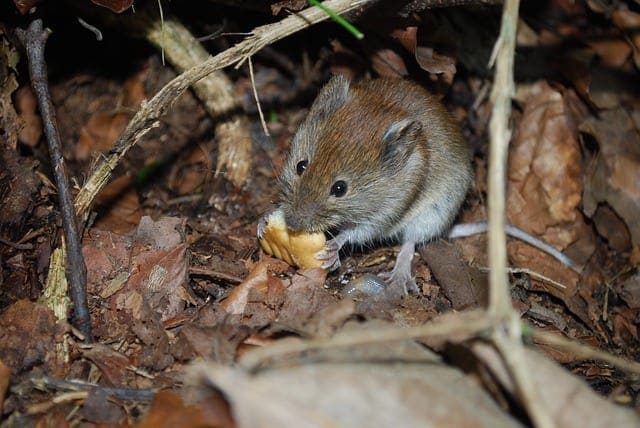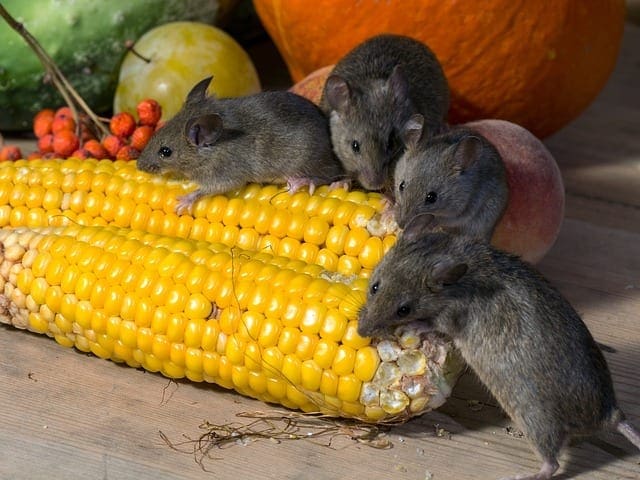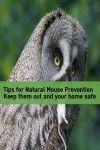How To Keep Mice Out Of Your Garden
Mouse and rodent prevention can be a tricky business for gardeners. Vegetable gardens can be a haven for small furry creatures. Any garden attracts a fair amount of attention. From aphids and beetles to raccoons and mice. How does one keep their garden thriving and produceing new blooms or food? First, find the signs that tell you who your visitor is and then learn its habits so it can be combated correctly. Gardening mouse prevention can be grown in the garden or made from the garden.

Mouse Damage
Mice can cause major damage to infrastructure and appliances when they make themselves at home in our houses, outbuildings, or gardens. They love to chew. are great at climbing and other acrobatics. It can also be very dangerous if they get into electrical wires or structural supports. If the infestation is not found quickly the repairs, and clean-up could cost a lot. Look for the signs of a mouse’s little fine scratch marks on food such as tomatoes or cucumbers in the garden. Chew marks near building entryways or damaged siding. Check for the tell-all sign of mouse droppings along walls indoors and outdoors.
Mice are Not Sanitary
Rodents carry a host of parasites and diseases that I don’t even want to get into, just think about The Black Plague. From 1346 to 1353 The Black Plague killed millions of people. Mice carried Yersinia pestis a bacteria that spread to humans through fleas that were hosted on mice first.
Parasites aside, mice just kind of do their business everywhere. One way to tell if you have a mouse problem is by noticing their trail of feces or stains from their urine in corners or along walls. As the problem begins to escalate a smell may become noticeable.
Mice are primarily nocturnal and have bad eyesight. So chances are you won’t see them out scavenging your garden during the day. Their eyesight also makes them stick close to walls and baseboards. For the most part, they will follow the same trail on a nightly basis, their keen sense of smell helps them follow this trail. The same trail we talked about earlier, is pretty gross really.
How Do Mice Get In?
The sneaky little beast doesn’t need much room to find an entrance. It’s important to routinely check your home and outbuildings for any small gaps, and repair them. Silicone will help with smaller holes, steel wool is also a great way to fill a larger hole. Plan ahead when constructing a new building. Be sure to properly hang doors and windows so they fit tightly and have the appropriate flashing.
Common Places Vermin Enter
- Dryer vent ducts
- Poorly fitting door
- Drains and/or other places plumbing may come into the structure
- Pet doors
- Guttering
- Exterior Ventilation Covers
Keep in mind that nocturnal rodents travel next to walls when they move around a building due to their poor eyesight. In some cases if possible it may help to use a rat line. A Rat line is simply an empty space running parallel to walls. This empty space makes it easier to find signs of rodents and other vermin. With the added advantage of making cleaning and sanitizing the areas that rodents most like a lot easier. If the mouse’s scent trail is not properly removed with cleaning other mice will use it to find the way in,
Common Types Of Mice
There are many different kinds of mice. Missouri has about 20 different species of small mouse-like rodents. How a mouse gets in and what it likes to eat has a lot to do with what species it is. House mice range from a light gray color to light brown and have lighter-colored stomaches underneath. A house mouse grows to about 3 1/2 inches long. Deer Mice are similar but generally a little bigger ranging from 2 1/2 inches to 4 inches long. Deer Mice are gray or red in color resembling the coat of a deer and have a white stomach. The Norway rat is much larger with a body between 7 and 10 inches. Roof Mice like the name implies ofter enter a structure via the roof. Voles resemble mice but have much shorter tails.
- House Mouse
- Roof Mouse
- Deer Mice
- Norway Rat
- Vole

Be Less Mouse Friendly
- Be tidy
- Put all food away at night in airtight containers
- Wash down all surfaces regularly
- Keep excess pet food picked up including seed and grain
- Store bags of pet food in airtight containers
- Move furniture and tools away from walls to clean regularly
Gardening Mouse Prevention

Today’s market offers a million ways to get rid of a mouse and other rodents. From classic snap traps to devices that can be plugged into a wall and emit a sound wave only mice and other small animals can hear. Peanut butter may be the best bait for mouse traps if you ever have to use them. Please also remember to keep bait or other poisons away from children and pets. All of that being said I think it is easier to take measures to keep the mice away before they come in. So here are some gardening mouse prevention ways to get take care of the mouse problem when they do get in or as a backup plan.
- Classic mouse traps
- Sticky traps
- Edible mouse bait poisons blocks

Natural Gardening Mouse Prevention
- Keep a cat -hopefully, one that doesn’t like mice
- Snakes – think twice before removing a black or grass snake
- Birds of prey -if you live in the country an owl box may help
- Mint – mice have a strong sense of smell, growing mint as a border plant around your house may deter mice
- Dried Mint -sprinkle it by doorways and other places mice may enter
- Cloves -can also be placed by doors or other places mice maybe
- Peppermint oil – use some on a cotton ball and place it by a door or behind shelving
- Clove oil
- Dill

Make Your Own Mouse Deterrent From The Garden
If you’re feeling creative or just need to offload some things from the garden or fridge you can always make your own mouse spray. Mice have a great sense of smell and so don’t really care for spicy or minty things. This gives us a couple of options, make a minty spray from herbs like mint and clove, or essential oils if you have them. Or a spicy spray from things like hot peppers Habaneros, or jalapenos. You get gardening for mouse prevention is easy just use aromatic garden cut-offs or extras until you find a mix that works for you.
Fresh or dried herbs or peppers if you like can either be boiled down and strained then added to a spray bottle with some water. Option two for your creative DIY-ers is to put the ingredients in a glass jar with either water, oil, or even vodka and let it sit in a cool dark place for about a week and then strain it into a spray bottle. Sprays are quick to use and cheap once the time has been invested in making them.
Wow, that’s a lot on mice. Hope someone found it helpful. Due Diligence and remembering to keep up with pest control routines may be the secret to keeping the mice out.
Keep Mice In Mind While Planting
Let’s recap how gardening for mouse prevention works. Plan your garden plant choices with mice and other pests in mind. Add plants such as dill, mint, or marigolds with strong aromas to plant in groupings. Plant them around garden edges or entryways to deter mouse visitors and other unwanted rodents and insects. Gardening for mouse prevention is just a more specific form of companion gardening.
